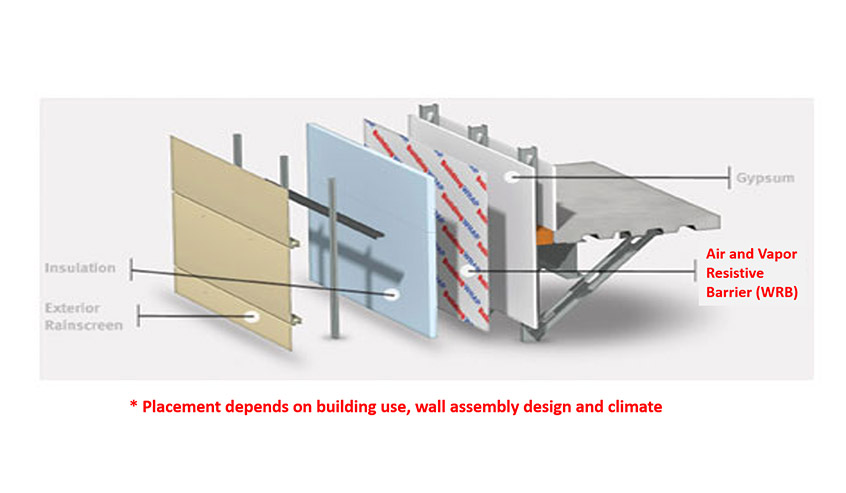What Are Weather Resistant/Water Resistive Barriers (WRB)?
- Air and vapor resistive barrier in wall assemblies
- Minimizes and controls condensation through vapor transmission
- Part of the inner leaf of the rain screen wall assembly in design principles
- Placement is controlled by building use and climate zone
- In rain screens, it is the last and most critical line of defense against water infiltration
Importance of WRB’s for ATAS
- Provide architects with sources and product reps for proper selection of WRB’s – WRB network
- Understand the total wall assembly
- Be aware of potential integration issues and design concerns for our wall panel systems
- Typically responsibility lies with the architect and HVAC engineering principal
- Coordination with structural and HVAC disciplines plus computerized modeling are used to ensure that design and project requirements for WRB’s are met
- ATAS is not responsible for WRB products nor their placement within wall assemblies
Importance of Weather Resistant/Water Resistive Barriers (WRB)
- Durable design of air and water resistive barriers is a prime design consideration for achieving energy efficiency, managing humidity, reducing sound transmission and improving indoor environmental quality (IEQ)
- Minimize and control air/water infiltration through the wall assembly
- Some WRB’s allow water vapor transmission
- WRB’s act as waterproofing for walls when installed correctly
Types of Weather Resistant/Water Resistive Barriers (WRB)
- Self-Adhered Sheet
- Fluid-Applied Membrane
- Closed Cell, Medium Density Spray Polyurethane Foam
- Factory-Bonded Membranes to Sheathing
- Boardstock – Rigid Cellular Thermax Insulation Board
- Mechanically Attached Flexible Sheet
ABAA Model Specs Currently in Development:
- Adhesive Backed Commercial Building Wrap
Limitations of Weather Resistant/Water Resistive Barriers (WRB)
- Air and water control are often two separate entities requiring different solutions based upon WRB selected
- Not all vapor retarders are durable enough to resist air movement, and not all air barriers resist vapor drive
- Improper placement or improper type of WRB can lead to trapping moisture within or across wall cavities and can result in condensation problems
- Inadequate detailing almost always results in failure

